I know, I know, it has been a while since I´ve published a new article. But this is due to the fact that after two years since I´ve had the luxury of indulging myself in the luxury of a true long-distance vacation. The turmoil that was my life in the past two years, after quitting my safe and well-paid job as a Beneteau boat dealer and starting my own business was the reason for one for not having the budget to afford such a trip and secondly … I simply didn´t had the time. Starting a self-employed business – especially here in bureaucratic Germany – is a wild adventure. Anyway. Here I am, back from almost three weeks in Japan.
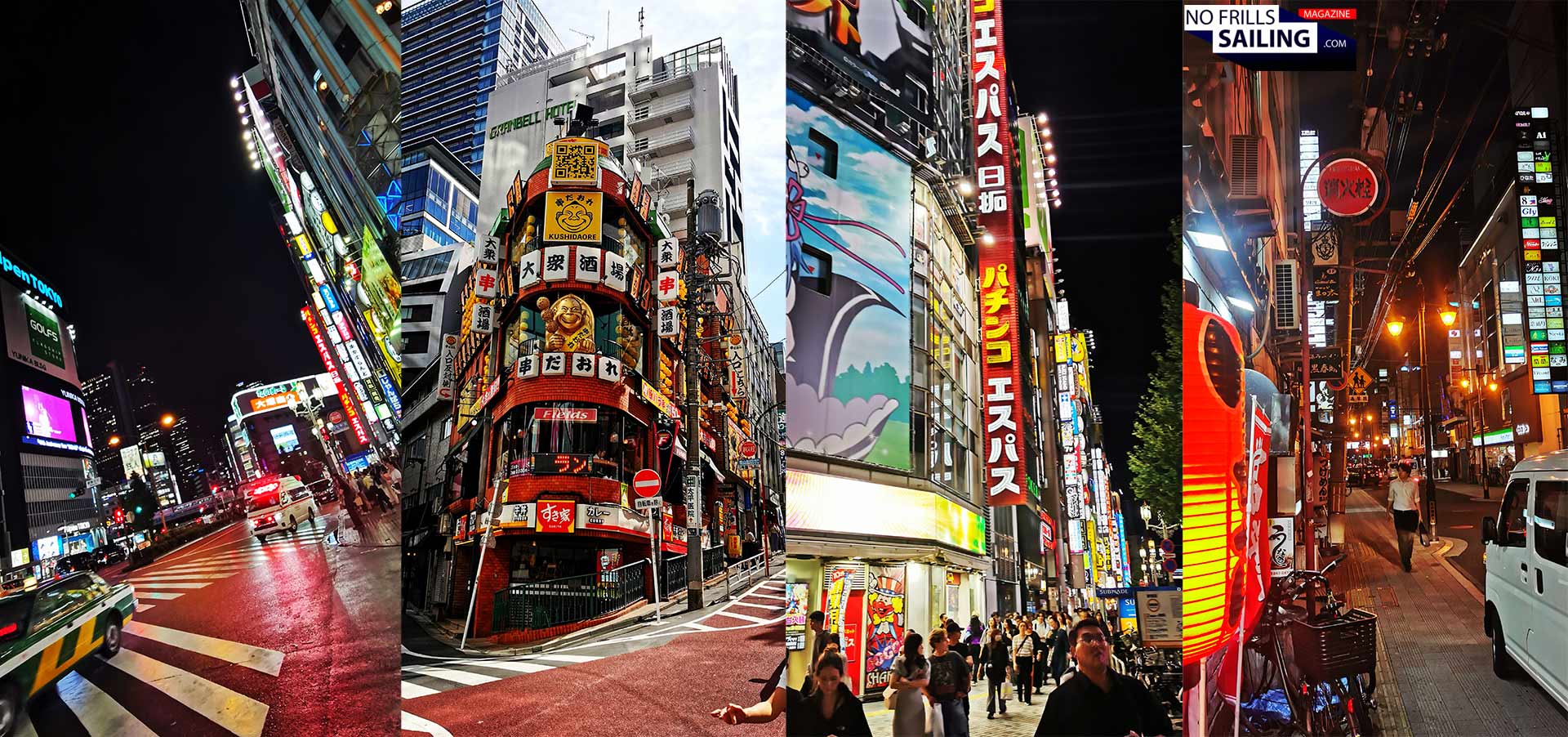
As I did with my last long haul trip to New York City in 2023, my initial aim was to produce a whole series of Japan-sailing-related articles. This worked just fine with the “Big Apple” as those articles – consolidated under the hashtag #newyorksailing – are still performing very well. And so I thought that I´d do the same with Japan. But as it turned out, it was very, very tough to even identify sailing spots, sailing-related locations and people over there. Sailing in Japan – not unlike the rest of Asia – is a very, very tiny branch of spare time activities. To be honest, apart from two topics, I couldn´t find stories worth traveling to and writing about. Which is, of course, typical for many Asian countries. One of the topics was the Yokohama boat show which by chance took place right when I was there. But I couldn´t convince my fiancé to go there after she had to spend a lot of weekends on boat shows with me.
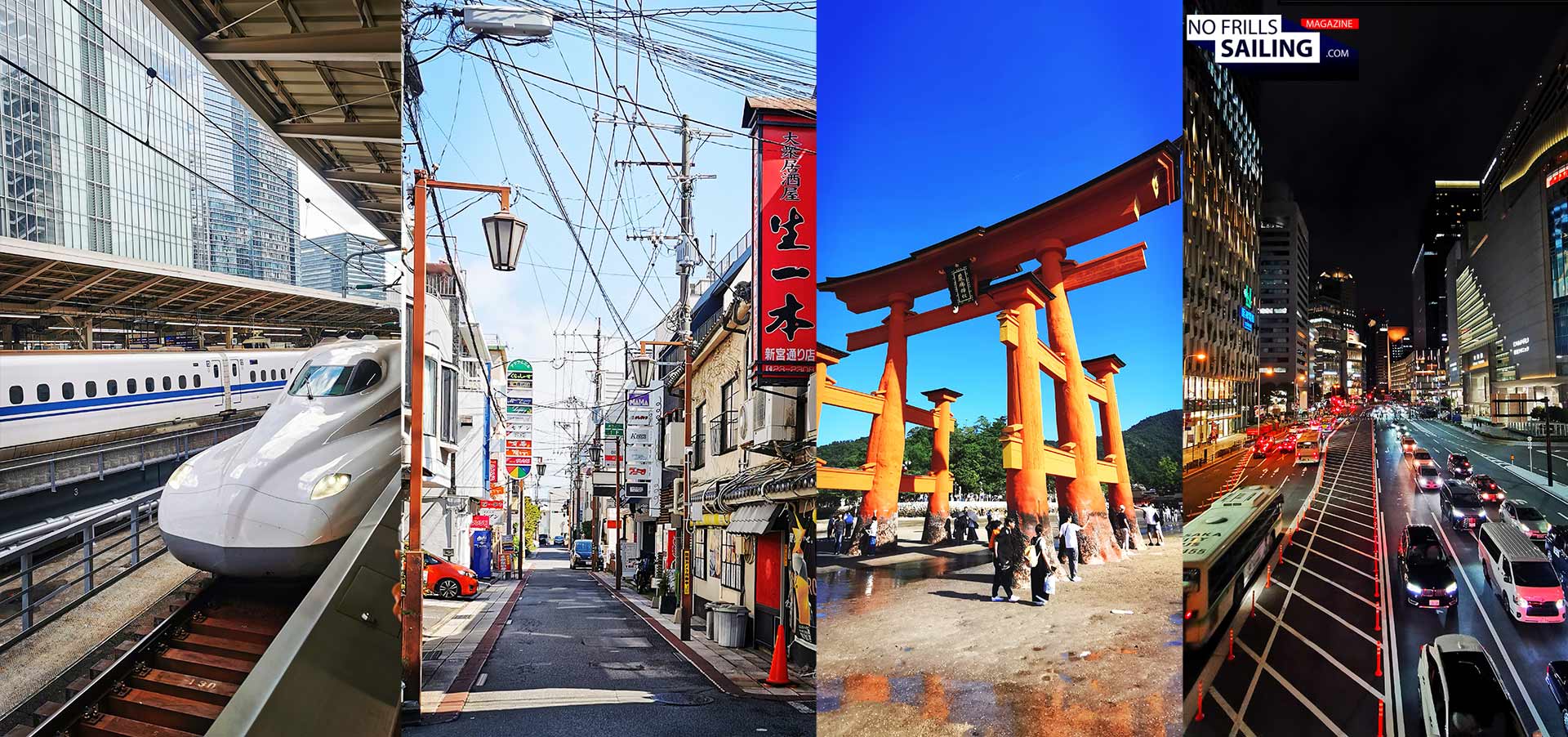
Which is understandable: Vacation first!, she insisted. And of course she was right. She knew best that I was the one who really needed to switch off, tune down, relax and do something else after almost 10 stressful years of boats, boats, boats. Ah, and the other topic was Kojiro Shiraishi. Kojiro is the Japanese sailing icon and big time hero of sailing in Nippon. As a three time Vendée Globe-participant he had recently finished on DMG-MORI, before that he circumnavigated the globe in a Class 40 racer. A popular hero. And as it turned out, he – and his Imoca racer – was presently touring Japan right when I was there. So, why not meeting him?
The plan of meeting Kojiro Shiraishi in Japan
I contacted his team, DMG-MORI, and these fantastic guys really did everything to make it happen. My initial plan was to meet Kojiro in Yokohama, talk to him and do a thorough interview. I also asked for a detailed walkthrough and tour of his Imoca (you know that DMG-MORI is the sister ship of the “old” CHARAL, which used to be my favorite Imoca design of them all. And as the cherry on top I asked for a little sea trial. Just a little dash out. A dream come true, right? Sailing with an Imoca racing boat … so at least a three-part series about Kojiro, his story and his fantastic efforts within the Vendée Globe circus. But, as usual with Imocas and me, it turned out to become a little … complicated
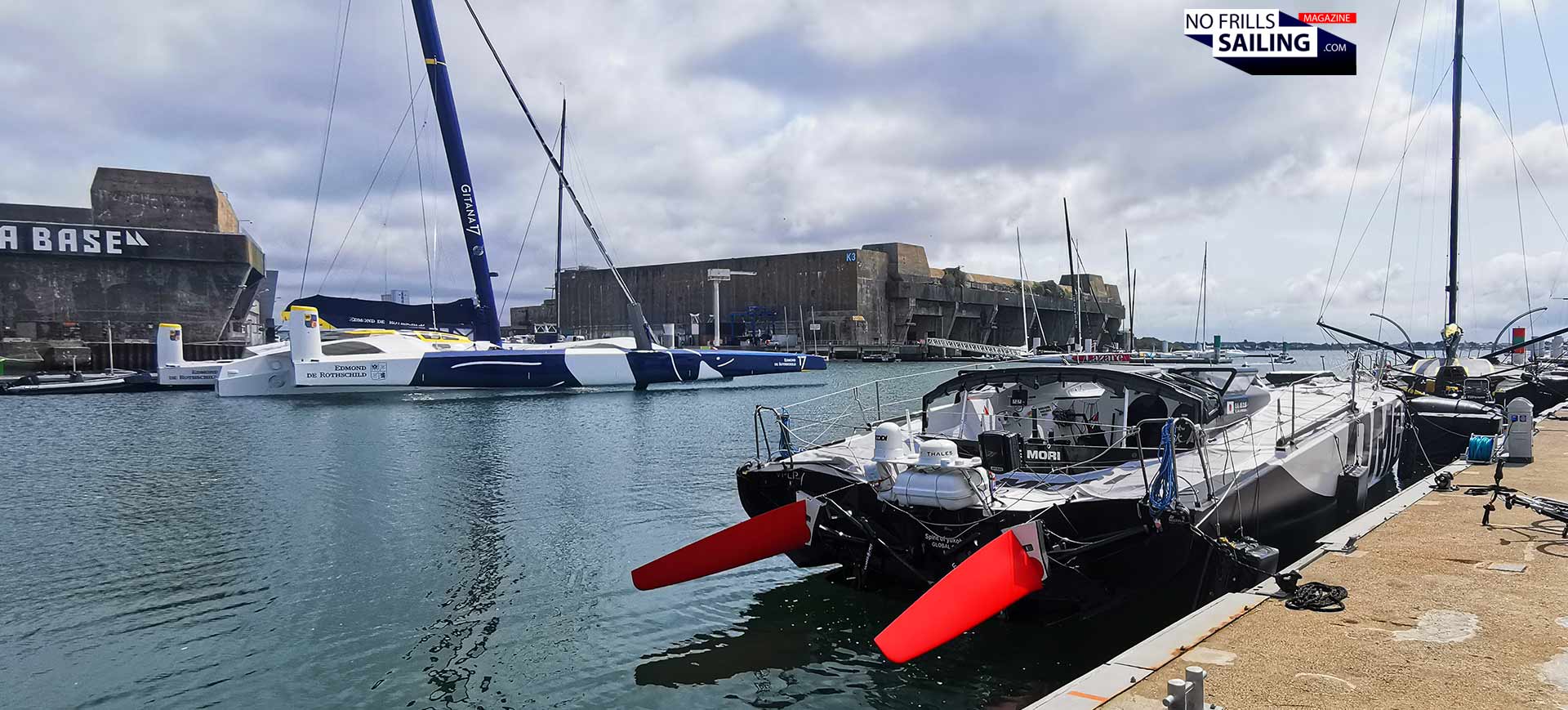
Kojiro wasn´t in Japan just for leisure. His calendar was packed full with appointments, events, meetings and lots and lots of commitments. In this, my request of being granted the focus and time of his to produce the mentioned three articles (which would have amounted to at least a full afternoon, four to six hours in total) was answered with the opportunity of getting a time window to talk to him on two days for 30 minutes. Well. That was a blow. And of course, 30 minutes is not even close to enough for doing a thorough interview, let alone a walkthrough. A dash out became impossible – casting off in an Imoca alone takes 30 minutes. So, in the end, I thanked the crew for trying their best, but refrained from utilizing one of my precious vacation days in Japan to travel to Yokohama just to see him for half an hour. Instead, my fiancé was happy to have me 100 percent of the time – and I was happy to do my interview with Kojiro remotely, saving both him and myself some time. In this, here we are, as the one and only “Japan Sailing”-article, here´s my conversation with Japan´s sailing hero, Kojiro Shiraishi …
Talking to the “Sailing Samurai”, Kojiro Shiraishi
Lars Reisberg | NO FRILLS SAILING.com: “Kojiro, it´s a shame we cannot meet in person, to start with. I sincerely hope we will meet when you are back to your base in Lorient in spring maybe! Thanks anyway for taking your precious time to do this interview remotely. Let´s start by introducing you to my readers: Who is Kojiro? Why and how has he become a pro-sailor? What triggered him to become a professional sailor anyway?”
Kojiro Shiraishi: “I know, Lars, my time and schedule here in Japan is really tight. Lots of liabilities and commitments. We´ll make the best out of it! About myself. Well, as a child, I spent my days near the sea in Kamakura city, and my curiosity about “what lies beyond the horizon” led to my admiration for the ocean. Later, in junior high, I watched a movie based on the true story of Kenichi Horie, who in 1962 became the first person in the world to cross the Pacific Ocean solo by yacht. The book “Alone on the Pacific” was made into a film and seeing it in junior high had a profound impact on me. That was the start: I wanted to cross the sea alone myself! Later I met who would become my mentor, Yuko Tada. After graduating high school, I thought, “If I want to aim for the world with yachts, I need training, not going to university,” so I went alone to seek guideline Yuko Tada. He is the first winner of the BOC Challenge Class II solo round-the-world race. An icon! I started with cleaning and chores, learning through hands-on experience. There, I learned the basics of being a sailor and the greatness of him.”
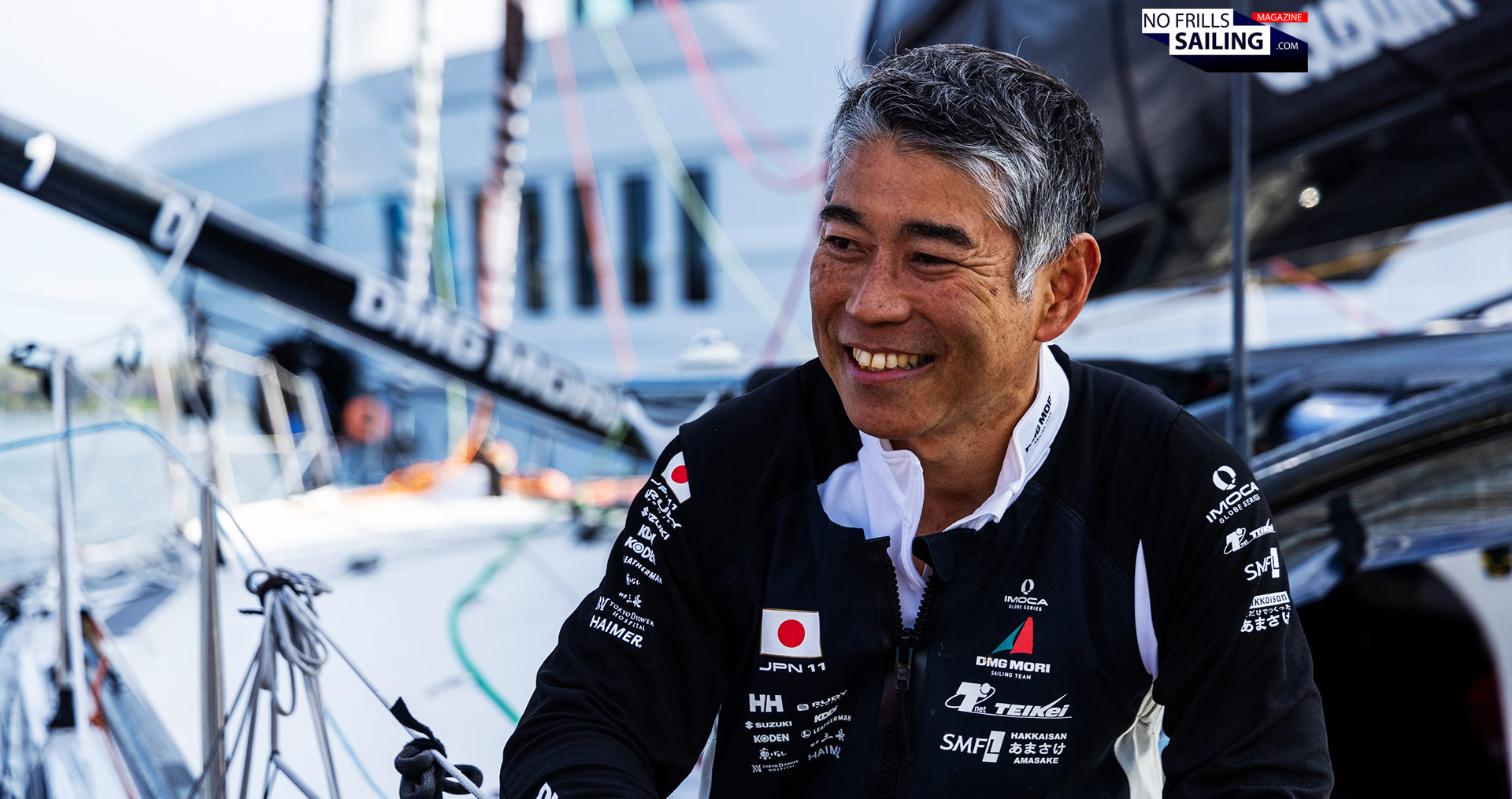
Lars Reisberg | NO FRILLS SAILING.com: “A dedicated sailor from the start! But tell me, Kojiro, sailing in Japan is still a kind of niche activity, right? Why is Japan, like China f.e., not a seafaring nation when there is not a single ship without workers from the Philippines? Has it historical reasons?”
Kojiro Shiraishi: “Well, there are cultural, geographical, and economic factors involved, I would say. Although Japan is surrounded by the sea, since modern times Japanese people have mainly regarded the ocean as a place solely for fishing and transport. Furthermore, from the 17th century to the 1850s, Japan was closed off from the world, and sailing ships would neither be developed nor built. Unlike Europe, where “the sea is a stage for adventure” and “a field for sports,” such culture did not take root in Japan. Then there is the land situation and lack of marinas: As you know, yachts require large ports or marinas for storage and mooring, but Japan’s coastal land is very limited, and leisure facilities have developed slowly. In Europe, almost every port town has a yacht club in some sort, which helps grow the number of competitors, but in Japan, such base is scarce. Good ports are often occupied by fishing cooperatives.”
Lars Reisberg | NO FRILLS SAILING.com: “I can imagine! And then there are maybe also budgetary and cultural factors involved, right?”
Kojiro Shiraishi: “Exactly. I mean, the cost of sailing, especially as a pro, is staggering. Sailing requires high costs for building and maintaining boats. In Europe, sponsorship is part of the culture, and events like the Vendée Globe are of great national interest. Here in Japan, companies rarely invest in minor sports, making it hard for professional sailors to emerge. And rightly so you´ve mentioned the cultural aspect, which instantly permeates who sport is prioritized: Most popular marine sports in Japan are surfing, fishing, and diving. That´s it. Sailing is seen as an “elitist” or rich person’s hobby, making it hard to spread.”
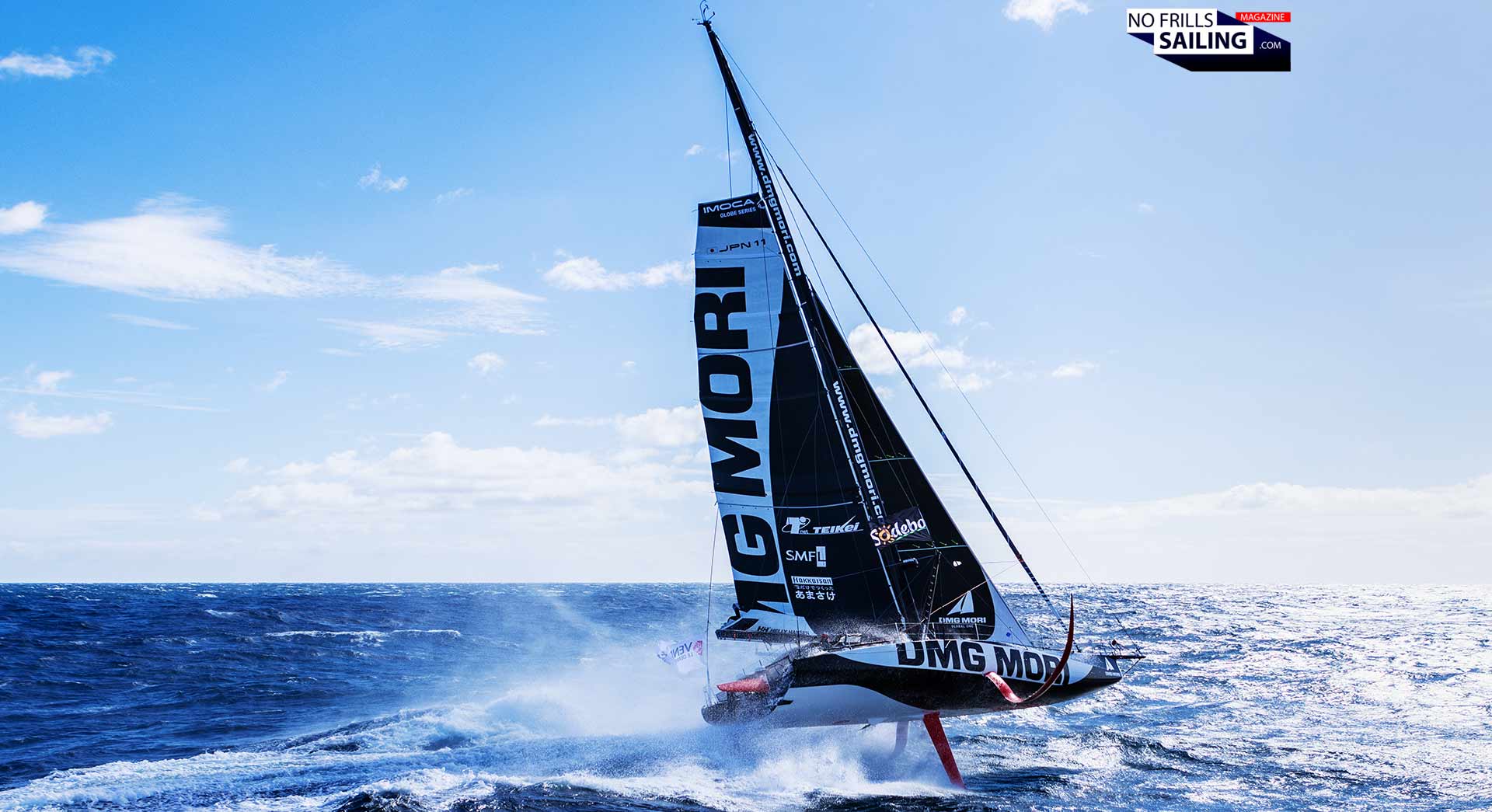
Lars Reisberg | NO FRILLS SAILING.com: “And even then, Baseball is much, much bigger here in Japan, right, even further dwarfing sailing. So I guess it was very hard for you to make your way as a pro-sailor? Which hurdles and challenges did you have to overcome and manage until his profession became sustainable for you?”
Kojiro Shiraishi: “Maybe I compare with Europe to set up a sense of scale in this respect: In European sailing nations, the Vendée Globe is a national event. It is broadcast on TV, and sponsors expect a return on their investment. In Japan, sailing is a very minor sport, and companies only see little advertising value. Finding sponsors required enormous efforts. In reality, I was often turned away at company receptions and spent a very long time chasing funding. Then there is a kind of “cultural isolation”. Japan has almost no tradition of offshore racing or support systems from yacht clubs. European sailors grow up in clubs from childhood and progress step by step into professional careers. Here in Japan I had to “pioneer” everything from scratch. Which took a long time, as you can imagine. The lack of personal networks was one of the main obstacles in this respect: A professional sailor needs a boat, funds, and a team. But in Japan, there are only very few specialized sailing engineers or meteorological analysts, so I had to move my base to France. I had to build my career by joining overseas teams and overcoming language and cultural barriers. Most offshore races are held in France, as you know.”
Lars Reisberg | NO FRILLS SAILING.com: “Let´s talk a bit about the mighty Vendée Globe. Was your participation at the Vendée Globe your “big goal”, like a lifelong dream? What have been the principal milestones in your campaign to make this dream come true?”
Kojiro Shiraishi: “Yes. For me, the Vendée Globe is indeed the “Everest of sailing around the world.” It is a solo, non-stop, unassisted round-the-world race. If you stop for repairs or supplies, you are immediately disqualified. For several months, you must face the sea alone. My mentor, Yuko Tada, won the BOC Challenge Class II solo round-the-world race in 1982 and was called “the world’s best yachtsman.” I wanted to challenge the Vendée Globe, just as my mentor did. In this, standing on a stage dominated by Europeans as a Japanese was both my (and my mentor’s) dream and a mission to “mark a new chapter in the culture of Japan’s maritime adventure.” But it was a long way to go, indeed … I first tried it in 2016. I entered for the first time, but had to retire due to a broken mast. With a strong desire to finish next time, I was able to form the DMG MORI SAILING TEAM in 2018. In 2020 finally, I achieved this dream: With the latest yacht named “DMG MORI,” I challenged again and became the first Japanese to finish the Vendée Globe! At that moment, I felt I had fulfilled my life’s dream.”
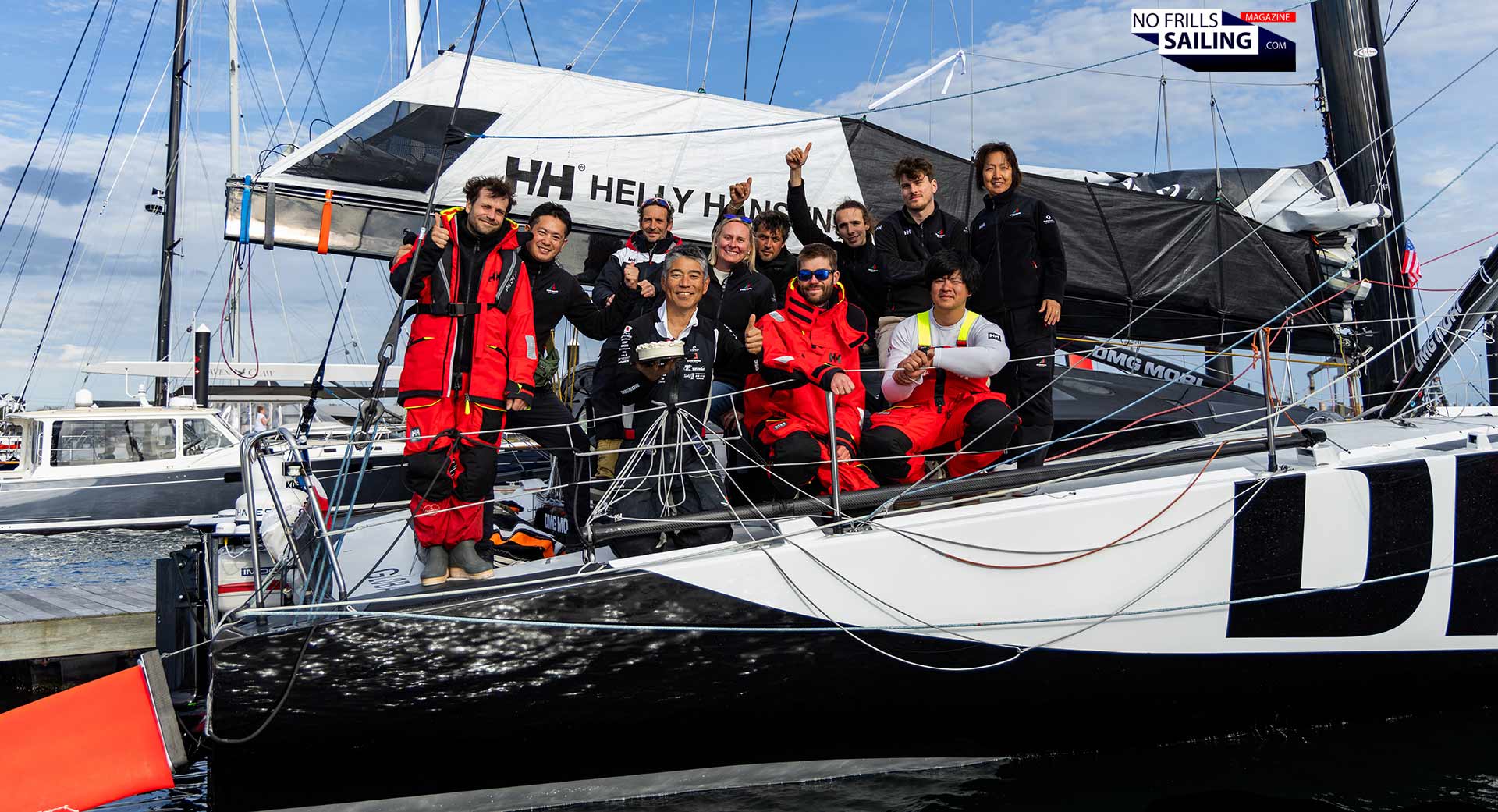
Lars Reisberg | NO FRILLS SAILING.com: “How did you train to qualify for the Vendée Globe? What have been the big training contents for your personally to acquire the confidence to sail such a big boat around the world, sailing-skills-wise?”
Kojiro Shiraishi: “It is a combination of five main “topics”, so to say. First, of course, there is the physical fitness. I mean, the sails of an Imoca weigh nearly 100 kilogram, and handling foils and ropes is hard work. I thoroughly trained my upper body and core with a dedicated trainer to prevent injuries. But you also need to be flexible and quick. Working in such a cramped boat requires twisting the body, so I expanded my range of motion with stretching and core training. Secondly, I focused on mental training. The meaning of Iaidō as mental training was in the center of these efforts. To survive the extreme conditions of solo sailing, you need more than muscles and skills! You need a way to calm your mind, and I found hints in the spirit of Japanese martial arts. Out there at sea, danger is always present. If you are consumed by fear or panic, you will immediately make mistakes in judgment. The “actions to calm the mind” learned in Iaidō help me stay calm during voyages. I also learned to focus on “the present moment”: In Iaidō, you eliminate unnecessary movements and thoughts, putting everything into a single strike. In yachting, I need to focus on “what to do next in a storm” or “how to take a 15-minute nap,” requiring really intense concentration. And finally, there is the challenge of facing loneliness: Solo sailing means spending months alone at sea. Laidō practice is “dialogue with oneself,” and is also training to accept loneliness.”
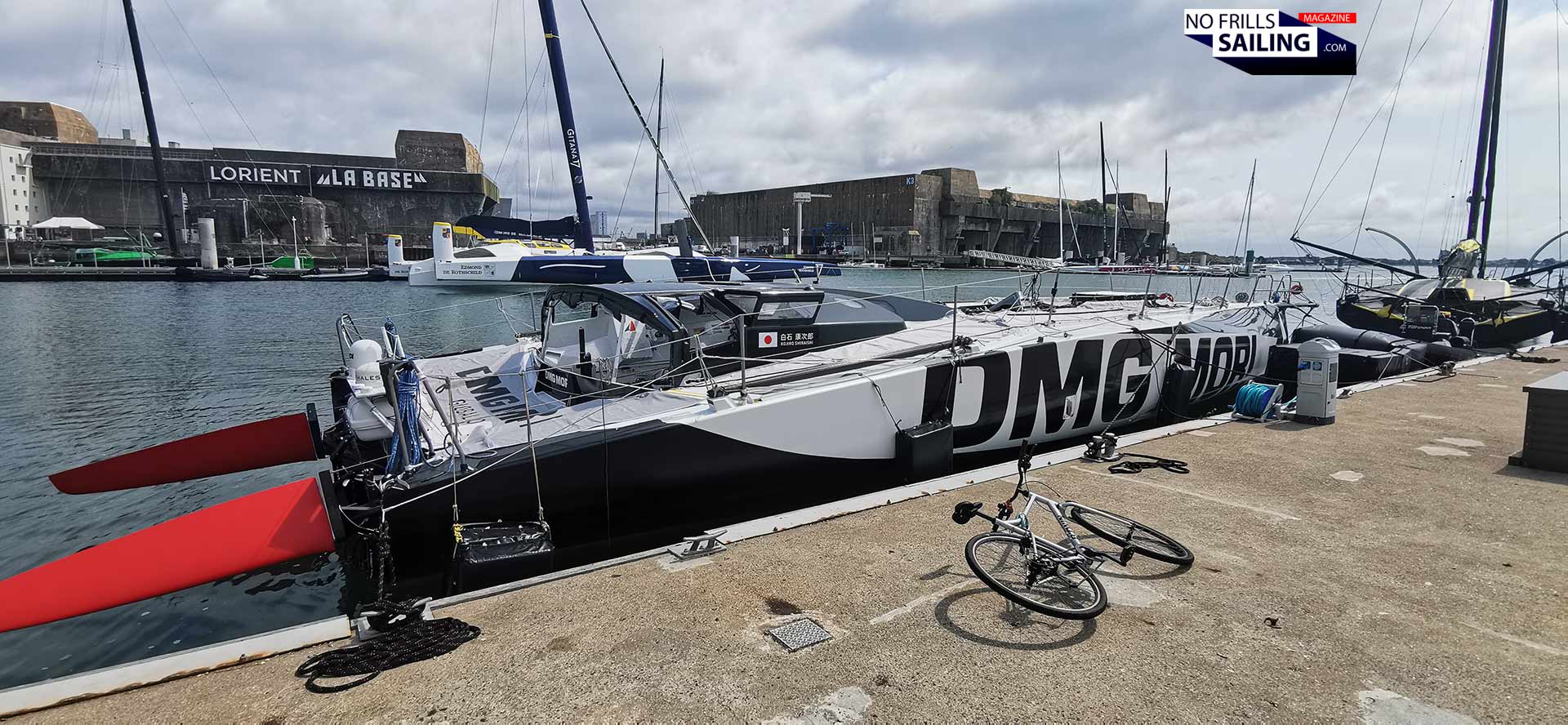
Lars Reisberg | NO FRILLS SAILING.com: “Wow, that is truly Japanese and now I understand why you are dubbed the “Sailing Samurai”. Amazing! Tell me, during your Vendée Globe, what have been the Top 3 nicest things – and the Top 3 hardest things you’ve experienced?”
Kojiro Shiraishi: “That´s an easy one to answer, really. Let´s have the nicest things first: The start from Les Sables-d’Olonne was and still is on prime position. It was truly moving! Then secondly, not during the race, but the fact that I´ve made friends around the world who risked their lives within this community really means a lot to me. And lastly, now during the race, the whole scenery underway. While sailing in the Southern Ocean during the 5-OCEANS race, the aurora and the comets were so beautiful. Unforgettable, really. Asking for the three hardest things of the Vendée Globe, well, of course the preparation before the start! That´s finding sponsors, building a team, and getting to the start line of the Vendée Globe took me 30 years to accomplish. Then, underway, there is nature. I collided with whales three times, capsized at 120 degrees and had to cope with tornados. Nature is unbeatable! And lastly: Seasickness!. I still haven’t overcome it.”
Lars Reisberg | NO FRILLS SAILING.com: “I want to emphasize a bit more on what you´ve mentioned in terms of European and Japanese (or Asian) culture. What comes to your mind first when you think of the Vendée Globe-race in terms of France, the French sailing and sailor´s community? I mean, it´s a pretty strong and tough environment and a completely different culture: Only a handful skippers are non-French, just two of the past Vendée Globe skippers were Asian. You and Jingkun Xu. What´s it like to enter into such a strong bonded community that is so much steeped in (European/French) tradition?”
Kojiro Shiraishi: “Well, I would say that in France, sailing, and especially offshore racing, is as popular as soccer or cycling. Take the Tour de France for example. The Vendée Globe is broadcast on national TV, and finishers are regarded as national heroes. The Vendée and Brittany are “marine cultural areas.” Even small towns have yacht clubs, and children participate in races from around the age of ten. Sailing is not a “special person’s hobby,” but “an adventure supported by the whole town.” There´s also a different sponsorship culture: Companies understand this, and supporting sailors is directly linked to “social contribution” and “corporate branding.” That’s why professional sailors can make a living there.”
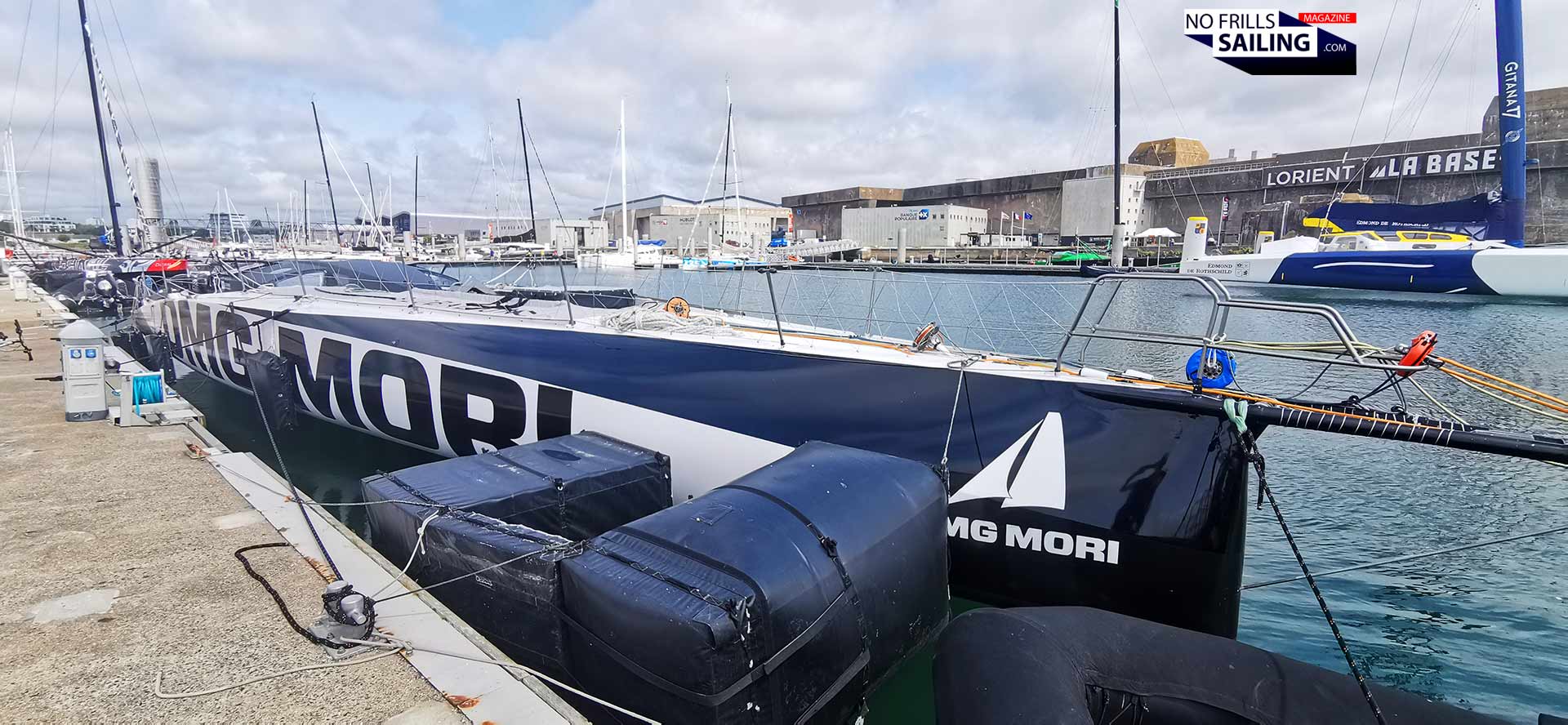
Lars Reisberg | NO FRILLS SAILING.com: “Tell us more about the difficulties as an Asian sailor, please.”
Kojiro Shiraishi: “Well. Almost all Imoca and Vendée Globe participants are European. I was the first Asian and the first non-white participant. There were language and cultural differences, but the French yachting community welcomed me warmly and taught me many things. Race management and media relations were handled through interpreters, but I think my statements based on Japanese values were received positively. Especially, the recognition of “samurai” is present, so perhaps I am seen as a samurai, I don´t know. A unique character unlike anyone else.”
Lars Reisberg | NO FRILLS SAILING.com: “Your 2024/25 Vendée Globe campaign brought you back to Les Sables d´Olonne after 90 days, placed 24th. It was your third participation and second successful completion of the Vendée Globe: What are your learnings, conclusions and ideas for a possible next Vendée Globe?”
Kojiro Shiraishi: “Really, I don’t see the Vendée Globe as a place to learn. It is truly a place to test myself. Sailing solo around the world tests who I am. And I spend a lot of time in dialogue with myself. There is no other place like the Vendée Globe to truly test myself, if you ask me.”
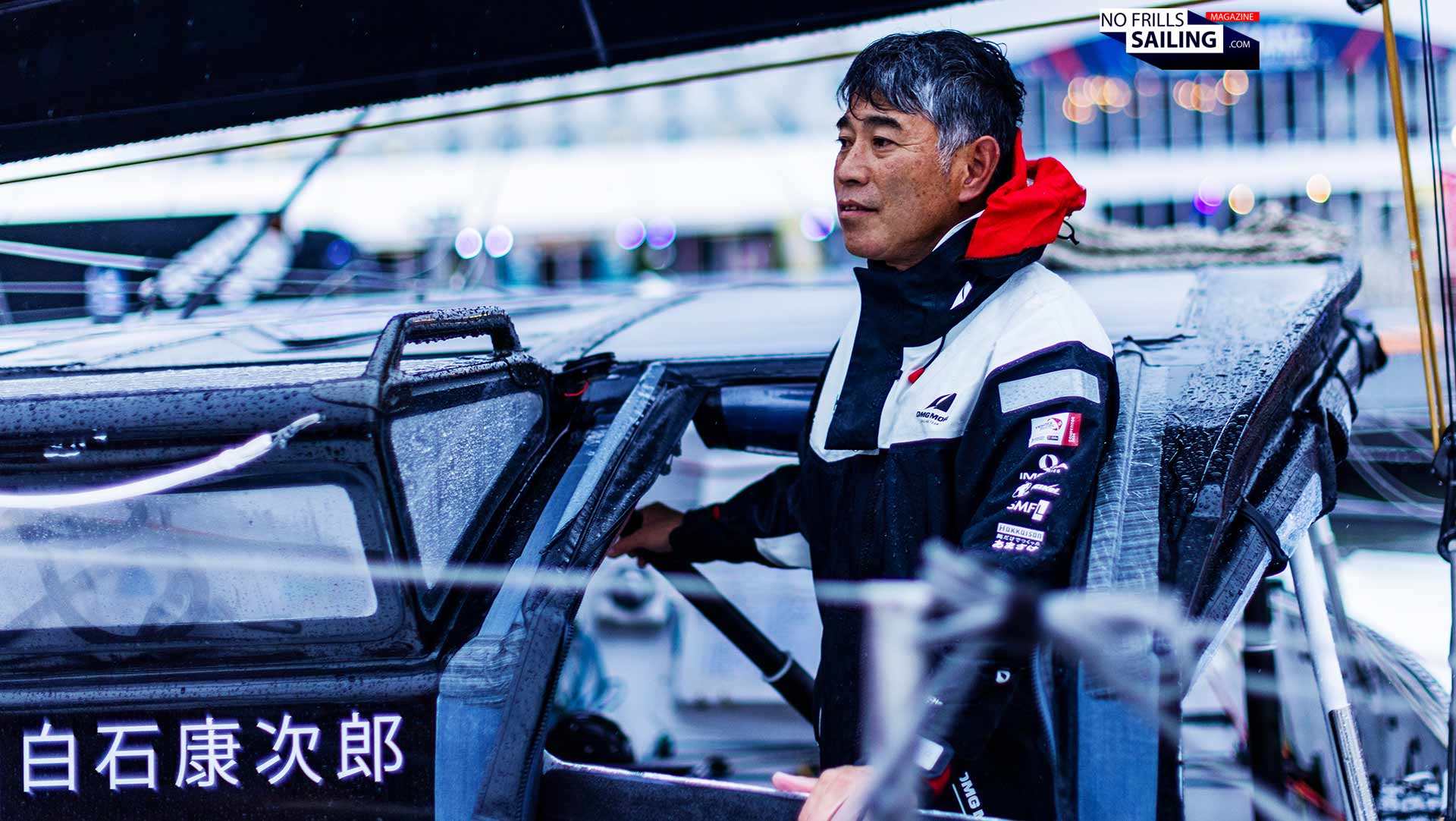
Lars Reisberg | NO FRILLS SAILING.com: “You kind of very politely evaded my last question, so again: Will your Sponsor DMG MORI go on financing your projects? And: The next edition of the Vendée Globe will take place in 2028: At this time you will be 61 years old. You once have been the youngest Vendée Globe contender, then maybe the oldest? What´s your take on sailing (at such a level) and age?”
Kojiro Shiraishi: laughs “DMG MORI is a global company with employees all over the world. Many staff travel alone to factories and repair machines. My challenge inspires those employees and gives them energy for tomorrow. Challenging at age 61 is a message that you should never lose the spirit of challenge, no matter how old you are …”
Lars Reisberg | NO FRILLS SAILING.com: “I understand, Kojiro. My last question is an open one – do you have something that really grinds your gears? A message for people – to Japanese, or in general, to all of my readers? This is your stage …”
Kojiro Shiraishi: “Here is my message: Let’s go on an adventure!”
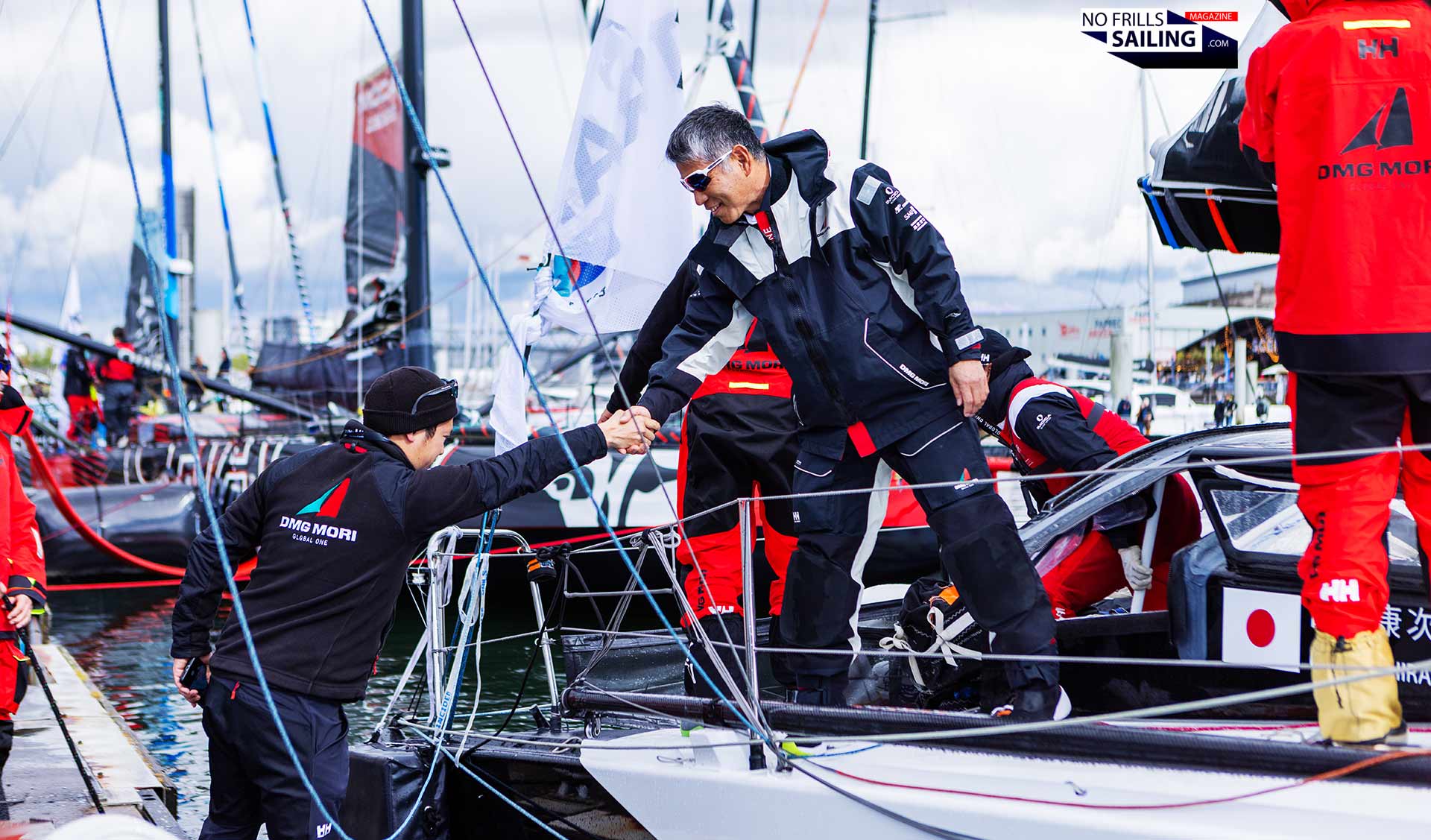
Kojiro, thanks a lot for taking your time and answering my questions! Even if we couldn’t meet and sail a bit together, it was an honor and truly interesting experience talking to you. I hope we can meet at some point when you and your boat are back in Lorient´s “La Base” and maybe we can catch up on the articles I wasn’t able to produce this time. Thanks also to your staff at DMG-MORI who has relayed my inquiries and organized this interview. All the best, Kojiro – Ganbatte!
Pictures © by Thomas Deregnieaux with kind permission by DMG-MORI & Lars Reisberg
Related articles that might be of interest:
Talking to Guo Chuan, at that time China´s only pro offshore skipper
Visiting the Imoca racing yachts in Lorient
Detailed walkthrough in Imoca DUBREUIL. Almost.
